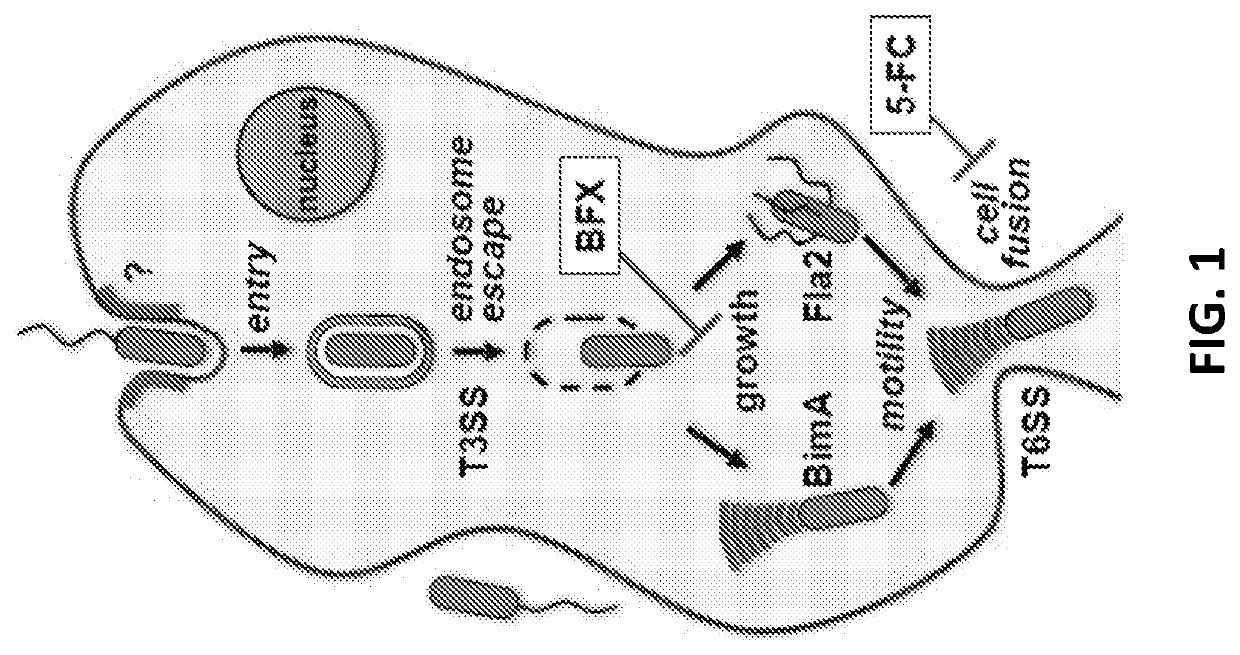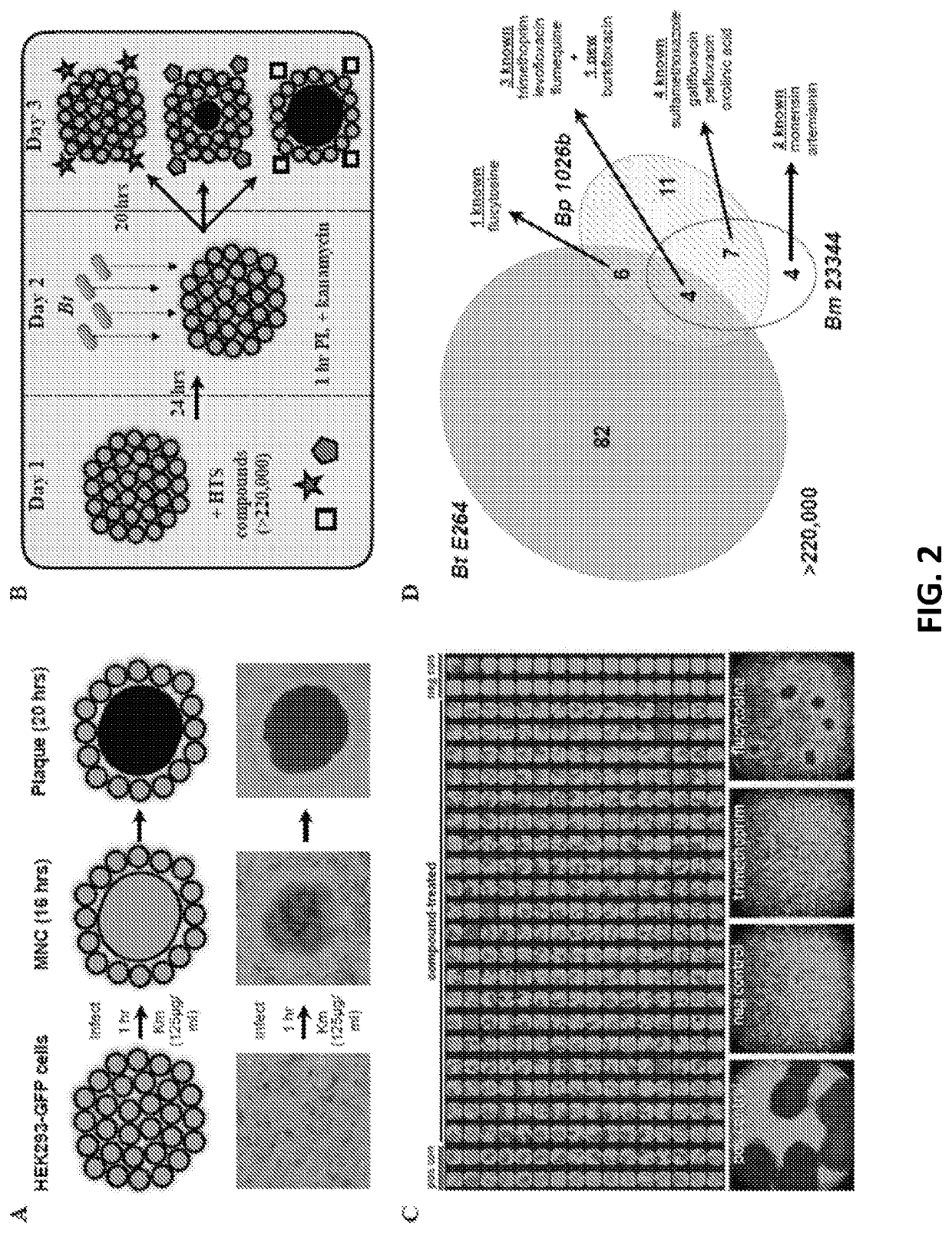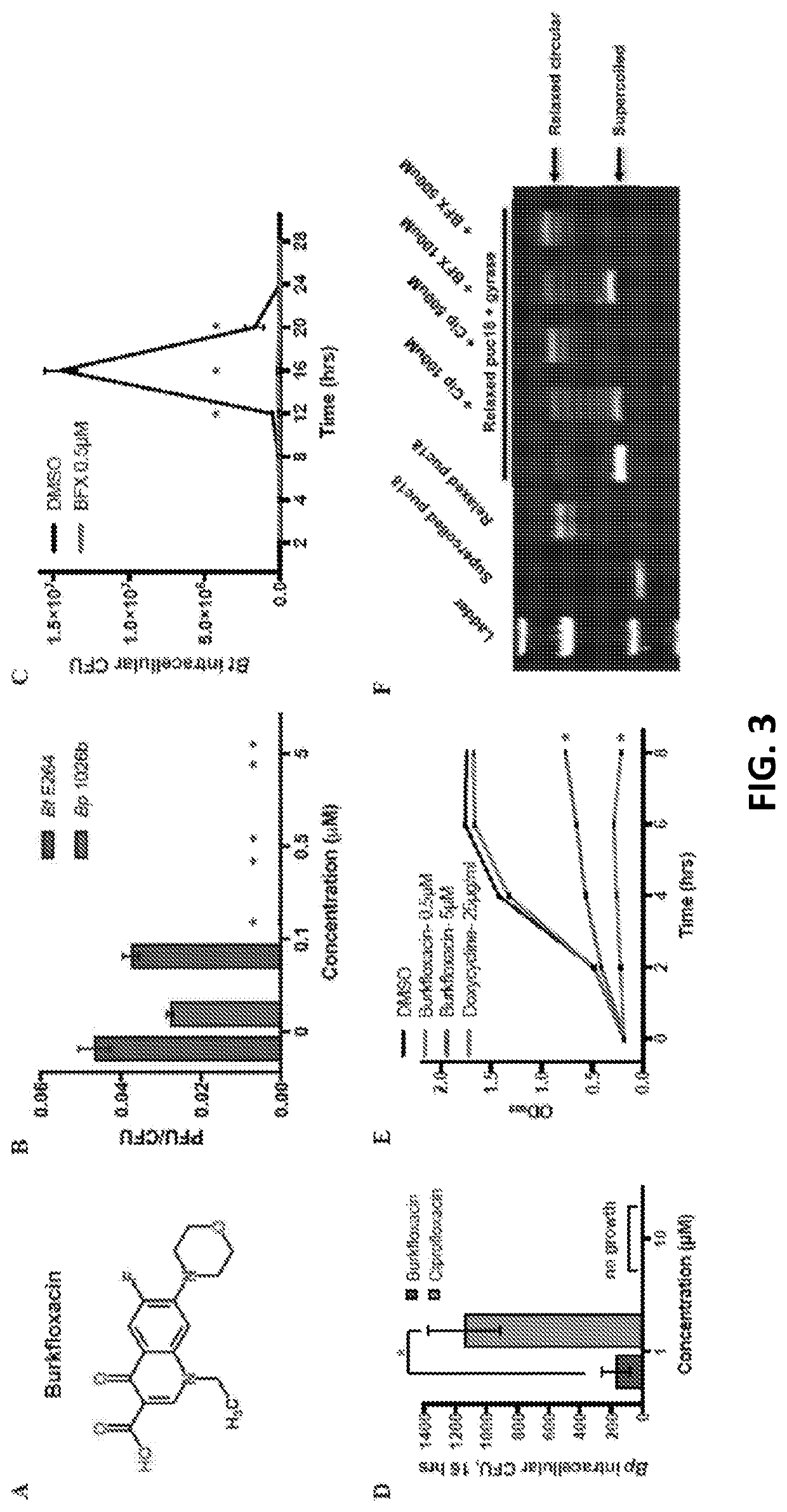Discovery of novel Anti-infectives for gram negative pathogens
a pathogen and anti-infective technology, applied in the field of anti-infectives for gram negative pathogens, can solve the problems of limited therapeutic options, high mortality rate, complicated clinical management, etc., and achieve the effects of potent and selective activity, improved survival, and inhibiting the growth of intracellular burkholderia
- Summary
- Abstract
- Description
- Claims
- Application Information
AI Technical Summary
Benefits of technology
Problems solved by technology
Method used
Image
Examples
example 3
pproved Antifungal 5-FC Inhibits Intercellular Spread and Affects Activity of T6SS-5
[0041]Our screen also identified 5-FC, an FDA-approved antimycotic, as an inhibitor of plaque formation by Bt and Bp. 5-FC is a fluorinated cytosine analog (FIG. 4A) that serves as a first-line therapy for serious fungal infections, such as cryptococcal meningitis (37), and is included in the World Health Organization (WHO)'s List of Essential Medicines (38). In light of its established efficacy as an antifungal agent, we investigated the mechanism of 5-FC in an alternative context, as an inhibitor of Burkholderia cell-cell spread. As shown in FIG. 4B, 5-FC inhibits plaque formation by Bt and Bp in a dose-dependent fashion. 5-FC does not affect growth of bacteria in laboratory medium at concentrations that eliminate plaque formation (FIG. 4C), analogous to BFX. Unlike BFX, however, 5-FC does not prevent the growth of intracellular bacteria at concentrations that inhibit plaque formation, although a s...
example 4
bition of Cell-Cell Spread Depends on Activity of Metabolic Intermediates
[0043]The antifungal properties of 5-FC arise due to the cytotoxicity of its metabolic products (37, 40). As shown in FIG. 5A, following uptake of 5-FC by cytosine permease (CodB) and conversion to 5-FU by cytosine deaminase (CodA), the metabolism of 5-FC bifurcates into two pathways which ultimately result in antifungal activity via inhibition of RNA and DNA synthesis. However, while the orthologous pathways and enzymes are present in Pseudomallei-group Burkholderia (FIG. 5A), bacterial growth is mostly unaffected (FIG. 4D), implicating a unique mechanism for 5-FC in the inhibition of cell-cell spread. Accordingly, we investigated key 5-FC metabolic enzymes and their products for plaque formation phenotypes.
[0044]As shown in FIG. 5A, pathway 1 is involved in the synthesis of pyrimidine nucleotide triphosphates. We found that 25 μM 5-fluorouracil (5-FU), like 5-FC, completely abolished plaque formation (FIG. 5B...
example 5
Mutagenesis Screen for 5-FC Resistance Identifies a Novel Regulator of T6SS-5 Activity
[0045]To gain further insight into the inhibitory mechanism of 5-FC, we performed a forward genetic screen to identify mutations leading to resistance. WT Bt was treated with the DNA alkylating agent ethyl methanesulfonate (EMS). Pooled mutagenized bacteria were then used to infect cells in the presence of 25 μM 5-FU (FIG. 6A). The use of 5-FU instead of 5-FC eliminated selection for mutations in the enzyme CodA. MNCs were picked from 384-wells at 16 hours post-infection, lysed with detergent, and plated on L-agar for isolation of individual bacterial colonies. Resistant phenotypes were validated by cell infection assays in the presence of 5-FU. The uprt gene was PCR amplified and sequenced for all resistant mutants, and mutants containing single nucleotide polymorphisms (SNP) in this gene were eliminated. In total, approximately 6 million chemical mutants were assessed for resistance, of which 20 ...
PUM
| Property | Measurement | Unit |
|---|---|---|
| concentrations | aaaaa | aaaaa |
| concentrations | aaaaa | aaaaa |
| volume | aaaaa | aaaaa |
Abstract
Description
Claims
Application Information
 Login to View More
Login to View More - R&D
- Intellectual Property
- Life Sciences
- Materials
- Tech Scout
- Unparalleled Data Quality
- Higher Quality Content
- 60% Fewer Hallucinations
Browse by: Latest US Patents, China's latest patents, Technical Efficacy Thesaurus, Application Domain, Technology Topic, Popular Technical Reports.
© 2025 PatSnap. All rights reserved.Legal|Privacy policy|Modern Slavery Act Transparency Statement|Sitemap|About US| Contact US: help@patsnap.com



